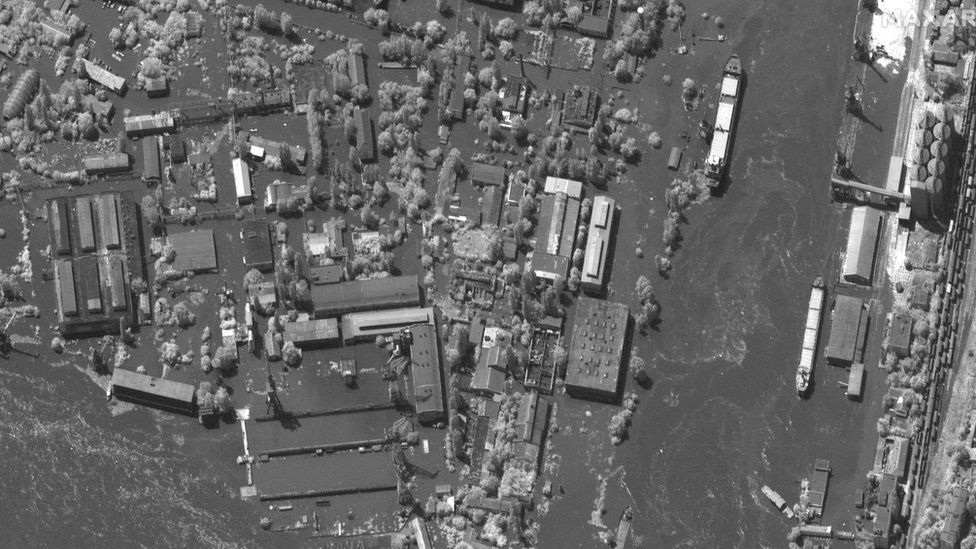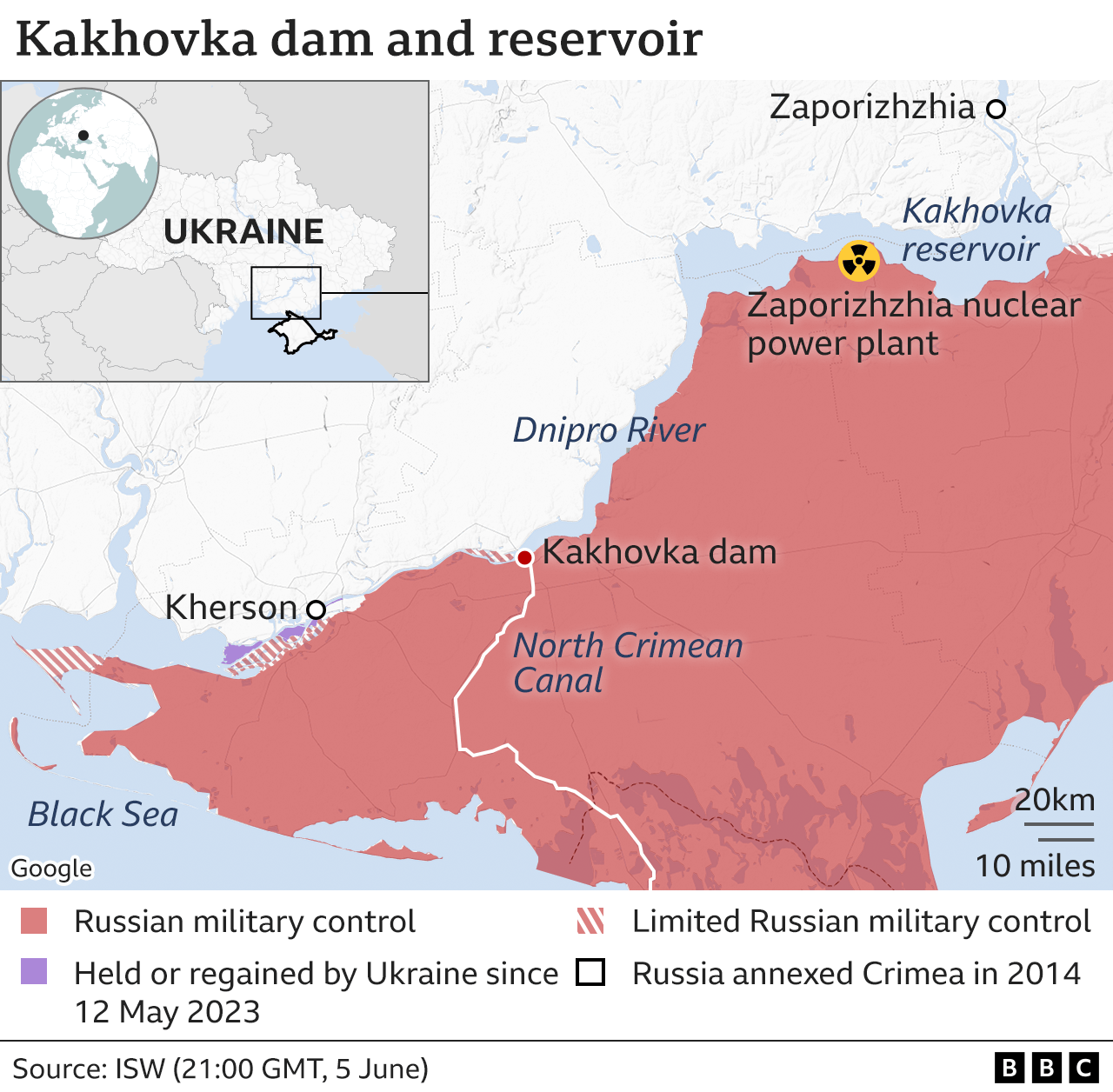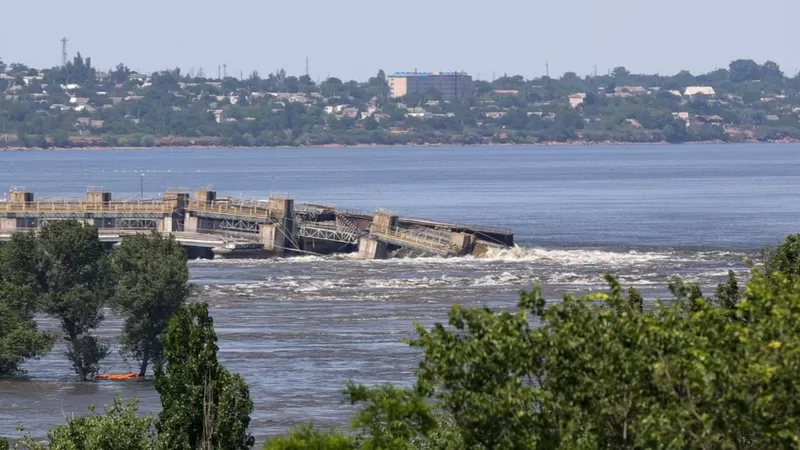A huge dam in the Russian-controlled area of southern Ukraine has been destroyed, unleashing a flood of water.
Ukraine’s military and Nato have accused Russia of blowing up the dam, while Russia has blamed Ukraine.
Thousands of people have been evacuated from communities in the surrounding areas, as catastrophic floods engulf low-lying areas either side of the river Dnipro.
Flood waters are expected to peak in the coming hours, but UN humanitarian aid chief Martin Griffiths is warning of grave and far-reaching consequences for thousands of people in the affected Kherson region.
Here’s what we know so far.
Kakhovka
Hundreds of people living in low lying parts of the city of Kherson, less than 50 miles downstream from Nova Kakhovka, have been evacuated, regional governor Oleksandr Prokudin said.
He added that almost 2,000 houses on the Ukrainian-controlled right bank of the river had been submerged.
Ukrainian hydro power dam operator UkrHydroEnerho said the Nova Kakhovka station was “fully destroyed” and could not be restored.
The river has also been contaminated with 150 tonnes of industrial lubricant, said President Volodymyr Zelensky, and another 300 tonnes was at risk of leaking.
There are concerns about desertification, with agricultural land washed away by flood waters and the negative consequences of the flooding likely to be felt for years.
Ukraine’s agriculture ministry said 10,000 hectares of agricultural land on the Ukrainian-controlled side of the Dnipro had been flooded, and several times more on the Russian-occupied.
At the same time some 94% of irrigation systems for agriculture in Kherson region were now without a water source, the ministry added.

Has it been attacked?
It’s not yet clear what caused the breach in the dam, but Ukraine’s military has accused Russia of deliberately blowing it up. This seems plausible, as Moscow may have feared that Ukrainian forces would use the road over the dam to get troops across the river into Russian-held territory, as part of a counter-offensive.
But Kremlin spokesperson Dmitry Peskov rejected Russian involvement, and instead blamed Ukraine, calling it an act of “sabotage” that would deprive the Crimean peninsula – an area annexed by Russia in 2014 – of water.
Neither Ukraine nor Russia’s claims have been verified by the BBC.
The dam was very important and served a number of purposes.
It held back a vast reservoir that supplied water to a host of communities upstream, and also provided cooling water to the nuclear power station at Zaporizhzhia, around 100 miles upstream, which is under Russian control and relies on the reservoir.
The International Atomic Energy Agency (IAEA) said there was no immediate nuclear safety risk but it was monitoring the situation.
It later said in a statement that if the dam did fall below 12.7m, the lowest level at which water can still be pumped upstream to Zaporizhzhia, there were alternative water sources to keep the nuclear plant cool, including a large cooling pond next to the site.

But as well as that, the dam was a vital channel carrying water from the Dnipro to Russian-occupied Crimea, meaning water supplies there are likely to be affected.
After Russia annexed Crimea in 2014, Ukraine blocked a channel carrying water from Nova Kakhovka, triggering a water crisis on the peninsula.
Russian forces reopened the channel soon after last year’s full-scale invasion. But without the dam, dropping water levels could once again jeopardise the flow of water along the channel.
Russia has previously carried out several attacks on dams throughout Ukraine since the invasion, causing widespread flooding and disrupting power supplies.
